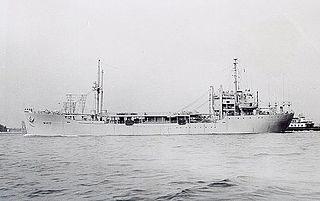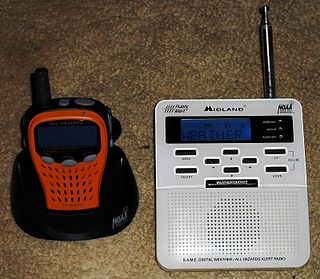History of Coast Guard shore stations
The first Coast Guard shore stations were established after 1924, when the Coast Guard's mission expanded. The first shore station was at Rockaway Point Coast Guard Station, located at Fort Tilden, New York; and the network expanded to Nahant, Massachusetts; New London, Connecticut; Cape May, New Jersey; Cape Henry, Virginia (with the call sign NMN); Fernandina, Florida; Fort Lauderdale, Florida; Mobile, Alabama; San Francisco, California; San Pedro, California; Port Angeles, Washington; and Anacortes, Washington in the 1930s.
The network expanded even further in the 1940s, adding radio station NMH in Washington, D.C, among others. However, in the 1970s, the increasing use of automation caused the number of stations to contract. In 1976, for example, NMN (then at Communication Station (COMMSTA) Portsmouth) assumed the duties of NMH in Washington, and took over remote operations from Miami in 1993, Boston (NMF) in 1996, and New Orleans in 1998.
With the introduction of the computer-assisted Rescue 21 system, the ability of the Coast Guard to provide coverage on the marine VHF band in marginal areas has increased.
Modes of transmission
These stations broadcast navigation and marine safety messages through several means, including Navigational Telex [NAVTEX] transmissions on 518 kHz; facsimile transmissions of National Weather Service charts; single sideband transmissions; and Simplex Teletype Over Radio SITOR narrow-band direct-printing broadcasts. In the 1960s through the 1980s, these transmissions were broadcast live, with the interval signal of "Semper Paratus"; however, now, using Voice Broadcast Automation (VOBRA), a computerized voice ("Perfect Paul") reads the voice messages.
NAVTEX transmissions are identified by the last letter of the callsign of the station. Each station transmits a NAVTEX broadcast six times a day, including two rebroadcasts of the general forecast. A NAVTEX broadcast includes maritime navigation warnings, weather forecasts, ice warnings, Gulf Stream locations, radio navigation information, rescue messages, and marine advisories. Each station has 2 NAVTEX transmitters.
Besides broadcast messages, Coast Guard stations handle direct traffic between aircraft, cutters, boats, and shore stations on VHF, MF, and HF frequencies, including the HF Data Link encrypted e-mail system and Digital Selective Calling (DSC), which uses radio telephone to send digitally encrypted signals to either one receiver or a group or receivers.
Coast Guard call signs
Most Coast Guard land-based VHF radio stations do not use three-letter call signs as the larger communications stations do; instead, they identify themselves by the activity name, such as "Sector Baltimore", "Station Washington, D.C. (or Station Washington)". All Cutters (CG vessels 65 feet in length or greater) have four-letter international radio call signs, such as USCGC Citrus/NRPQ. Cutters normally identify themselves as "Cutter (name)". Boats identify themselves with the last digits of their registration number, for example, a Defender-class boat with the registration 25123 would be "Coast Guard 25123, while a 41-foot boat would be "Coast Guard 41345." Aircraft identify themselves by their number. A number beginning with "15,17,20" is a HC-130; "21" is a HU-25A/C/D; "23" is a HC-144A; "60" is a MH/HH-60J/T helicopter; "65 or 66" is a HH/MH-65; . Auxiliary aircraft and ships identify themselves as "Auxiliary ###".

Very high frequency (VHF) is the ITU designation for the range of radio frequency electromagnetic waves from 30 to 300 megahertz (MHz), with corresponding wavelengths of ten meters to one meter. Frequencies immediately below VHF are denoted high frequency (HF), and the next higher frequencies are known as ultra high frequency (UHF).

Medium frequency (MF) is the ITU designation for radio frequencies (RF) in the range of 300 kilohertz (kHz) to 3 megahertz (MHz). Part of this band is the medium wave (MW) AM broadcast band. The MF band is also known as the hectometer band as the wavelengths range from ten to one hectometers. Frequencies immediately below MF are denoted as low frequency (LF), while the first band of higher frequencies is known as high frequency (HF). MF is mostly used for AM radio broadcasting, navigational radio beacons, maritime ship-to-shore communication, and transoceanic air traffic control.

Marine VHF radio is a worldwide system of two way radio transceivers on ships and watercraft used for bidirectional voice communication from ship-to-ship, ship-to-shore, and in certain circumstances ship-to-aircraft. It uses FM channels in the very high frequency (VHF) radio band in the frequency range between 156 and 174 MHz, designated by the International Telecommunication Union as the VHF maritime mobile band. In some countries additional channels are used, such as the L and F channels for leisure and fishing vessels in the Nordic countries. Transmitter power is limited to 25 watts, giving them a range of about 100 kilometres.
The Global Maritime Distress and Safety System (GMDSS) is a worldwide system for automated emergency signal communication for ships at sea developed by the United Nations' International Maritime Organization (IMO) as part of the SOLAS Convention.
The radiotelephony message PAN-PAN is the international standard urgency signal that someone aboard a boat, ship, aircraft, or other vehicle uses to declare that they need help and that the situation is urgent, but for the time being, does not pose an immediate danger to anyone's life or to the vessel itself. This is referred to as a state of "urgency". This is distinct from a mayday call, which means that there is imminent danger to life or to the continued viability of the vessel itself. Radioing "pan-pan" informs potential rescuers that an urgent problem exists, whereas "mayday" calls on them to drop all other activities and immediately begin a rescue.
Radiofacsimile, radiofax or HF fax is an analogue mode for transmitting grayscale images via high frequency (HF) radio waves. It was the predecessor to slow-scan television (SSTV). It was the primary method of sending photographs from remote sites from the 1930s to the early 1970s. It is still in limited use for transmitting weather charts and information to ships at sea.
From early in the 20th century, the radio frequency of 500 kilohertz (500 kHz) was an international calling and distress frequency for Morse code maritime communication. For much of its early history, this frequency was referred to by its equivalent wavelength, 600 meters, or, using the earlier frequency unit name, 500 kilocycles or 500 kc.

NAVTEX, sometimes styled Navtex or NavTex, is an international automated medium frequency direct-printing service for delivery of navigational and meteorological warnings and forecasts, as well as urgent maritime safety information (MSI) to ships.
A Maritime Mobile Service Identity (MMSI) is effectively a maritime object's international maritime telephone number, a temporarily assigned UID issued by that object's current flag state.

The USCGC Courier (WAGR/WTR-410) was a cutter in the United States Coast Guard converted from the M/V Coastal Messenger a Maritime Commission Type C1-M-AV1 vessel.

Maritime mobile amateur radio is an amateur radio transmission license that allows maritime operators to install and use radio while they operating at sea. The call sign of operators is extended by adding the suffix "MM" when transmitting at sea.
In broadcasting and radio communications, a call sign is a unique identifier for a transmitter station. A call sign can be formally assigned by a government agency, informally adopted by individuals or organizations, or even cryptographically encoded to disguise a station's identity.

A weather radio is a specialized radio receiver that is designed to receive a public broadcast service, typically from government-owned radio stations, dedicated to broadcasting weather forecasts and reports on a continual basis, with the routine weather reports being interrupted by emergency weather reports whenever needed. Weather radios are typically equipped with a standby alerting function—if the radio is muted or tuned to another band and a severe weather bulletin is transmitted, it can automatically sound an alarm and/or switch to a pre-tuned weather channel for emergency weather information. Weather radio services may also occasionally broadcast non-weather-related emergency information, such as in the event of a natural disaster, a child abduction alert, or a terrorist attack.

2182 kHz is a radio frequency designed exclusively for distress calls and related calling operations in the maritime service. It is equivalent to a wavelength of 137.4 metres.

United States Naval Districts is a system created by the United States Navy to organize military facilities, numbered sequentially by geographic region, for the operational and administrative control of naval bases and shore commands in the United States and around the world. Established in 1903, naval districts became the foundational system for organizing U.S. naval forces ashore during the 20th century. The term "Naval" forces includes United States Marine Corps and current United States Coast Guard units.
An international distress frequency is a radio frequency that is designated for emergency communication by international agreement.
The Long Range Certificate is an internationally valid certificate issued to radio station operators. It entitles the holder to participate in marine communications on leisure crafts using Marine VHF, Medium Frequency, High Frequency radios and Inmarsat satellite communication as agreed in Global Maritime Distress and Safety System.
The Directorate General of Coastal Safety has been established by the Turkish Republic Council Of Ministers’ decision on 12 May 1997 as a General Directorate and State owned Organization. The mission of the foundation is to assist and improve the safety of navigation in Turkish Waters. The organization’s core competences are:

Maritime call signs are call signs assigned as unique identifiers to ships and boats. All radio transmissions must be individually identified by the call sign. Merchant and naval vessels are assigned call signs by their national licensing authorities.










